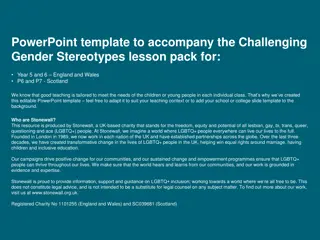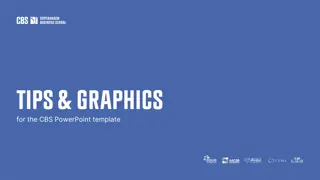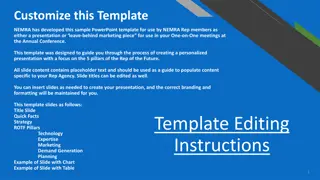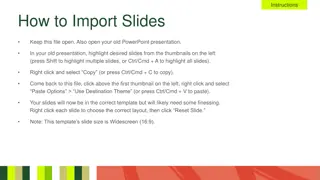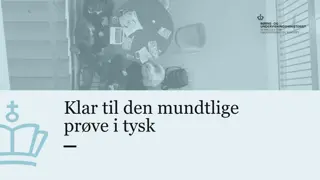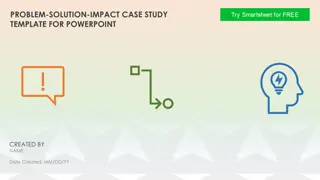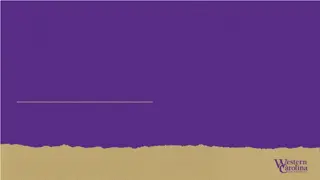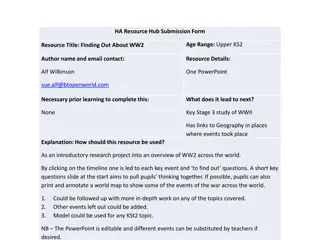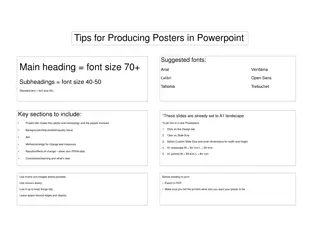
Guide to Major Skeletal Muscles and Their Functions
Explore the major skeletal muscles of the body, their relative size, shape, location, actions, and more. Learn about muscles of facial expression, mastication, and those that move the head through detailed descriptions and images.
Download Presentation

Please find below an Image/Link to download the presentation.
The content on the website is provided AS IS for your information and personal use only. It may not be sold, licensed, or shared on other websites without obtaining consent from the author. If you encounter any issues during the download, it is possible that the publisher has removed the file from their server.
You are allowed to download the files provided on this website for personal or commercial use, subject to the condition that they are used lawfully. All files are the property of their respective owners.
The content on the website is provided AS IS for your information and personal use only. It may not be sold, licensed, or shared on other websites without obtaining consent from the author.
E N D
Presentation Transcript
8.8 Major Skeletal Muscles
What muscle names tell us Relative size Shape Location Action Number of attachments Direction of fibers
Examples Zygomaticus originates at the zygomatic bone Gluteus maximus originates in the gluteal region and is a large muscle Tibialis anterior originates on the anterior surface of the tibia
Epicranus Origin occipital bone Insertion skin and muscles around eye Action raises eyebrow
Orbicularis oculi Origin maxillary and frontal bones Insertion skin around eye Action closes eye
Orbicularis oris Origin muscles near the mouth Insertion skin of lips Action closes and protrudes lips
Buccinator Origin outer surfaces of maxilla and mandible Insertion orbicularis oris Action compresses cheeks inward
Zygomaticus Origin zygomatic bone Insertion orbicularis oris Action raises corner of mouth
Platysma Origin fascia in upper chest Insertion lower border of mandible Action draws angle of mouth downward
Masseter Origin lower border of zygomatic arch Insertion lateral surface of mandible Action closes jaw
Temporalis Origin temporal bone Insertion coronoid process and lateral surface of mandible Action closes jaw
Sternocleidomastoid Origin anterior surface of sternum and upper surface of clavicle Insertion mastoid process of temporal bone Action pulls head to one side, pulls head toward chest, or raises sternum
Splenius capitis Origin spinous processes of lower cervical and upper thoracic vertebrae Insertion mastoid process of temporal bone Action rotates head, bends head to one side, or brings head into an upright position.
Semispinalis capitis Origin processes of lower cervical and upper thoracic vertebrae Insertion occipital bone Action extends head, bends head to one side, or rotates head.
Muscles that move the pectoral girdle Closely associated with those that move the arm. Many of these move the scapula up and down, back and forth.
Trapezius Origin occipital bone and spines of cervical and thoracic vertebrae Insertion clavicle; spine and acromion process of scapula Action rotate scapula and raises arm, raises scapula, pulls scapula medially or pulls scapula and shoulder downward.
Rhomboideus major Origin spines of upper thoracic vertebrae Insertion medial border of scapula Action raises and adducts scapula
Levator scapula Origin transverse process of cervical vertebrae Insertion medial margin of scapula Action elevates scapula
Serratus anterior Origin outer surface of upper ribs Insertion ventral surface of scapula Action pulls scapula anteriorly and downward
Pectoralis minor Origin sternal ends of upper ribs Insertion coracoid process of scapula Action pulls scapula anteriorly and downward or raises ribs
Muscles that move the arm Arm is freely movable. Muscles are grouped by their primary action. Flexion flexors Extension extensors Abduction abductors Rotation - rotators
Flexors Coracobrachialis Pectoralis major
Extensors Teres major Latissimus dorsi
Abductors Supraspinatus Deltoid
Rotators Subscapularis Infraspinatus Teres minor
Muscles that move the forearm Most forearm movement is accomplished by muscles that connect the radius or ulna to the humerus or pectoral girdle. Again, we have flexors, extensors and rotators.
Flexors Biceps brachii Brachialis Brachioradialis
Extensor Triceps brachii
Rotators Supinator Pronator teres Pronator quadratus
Muscles that move the hand Flexors Anterior side Flexor carpi radialis Flexor carpi ulnaris Palmaris longus Flexor digitorum profundus Extensors Posterior side Extensor carpi radialis longus Extensor carpi radialis brevis Extensor carpi ulnaris Extensor digitorum
Muscles of the abdominal wall External oblique Internal oblique Transversus abdominis Rectus abdominis
Muscles of the pelvic outlet Pelvic diaphragm Levator ani Urogenital diaphragm Superficial transversus perinei Bulbospongiosus Ischiocavernosus
Muscles that move the thigh Anterior group Posterior group Psoas major Iliacus Gluteus maximus Gluteus medius Gluteus minimus Tensor fasciae latae
Muscles that move the leg Flex the knee Extend the knee Biceps femoris Semitendinosus Semimembranosus Sartorius Quadriceps femoris group, consisting of: Rectus femoris Vastus lateralis Vastus medialis Vastus intermedius
Muscles that move the foot Dorsal flexors Plantar flexors Tibialis anterior Fibularis Extensor digitorum Gastrocnemius Soleus Flexor digitorum longus

